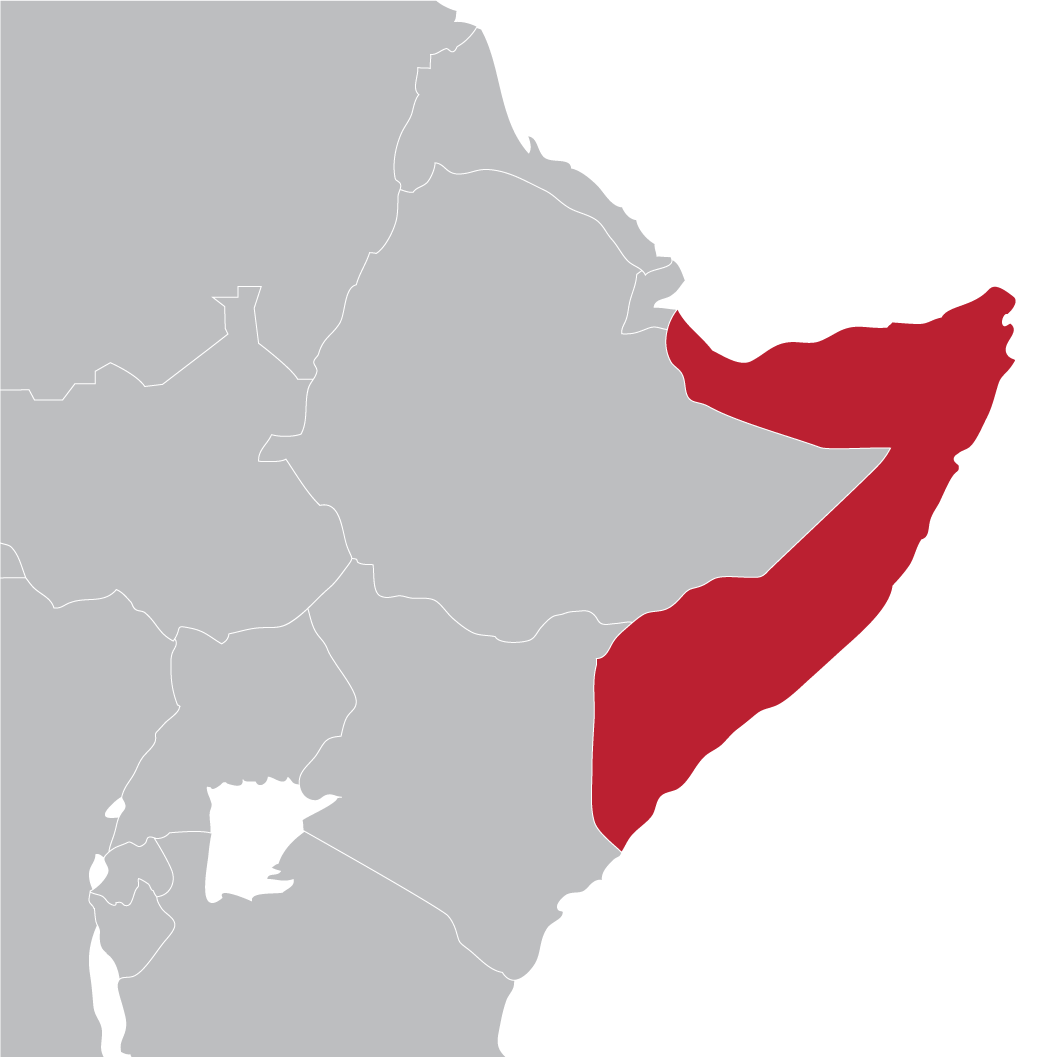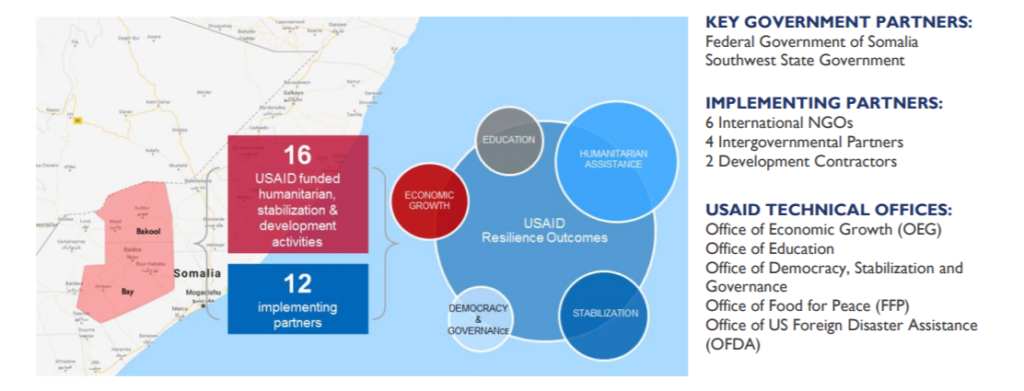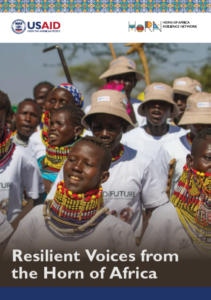
Somalia Resilience Partnership
Somalia is an environment often defined by complex and compound risks, including recurrent droughts and floods, chronic food insecurity, conflict, and fragility. The country regularly requires between 850 million to 1.5 billion USD to meet its annual humanitarian needs, yet it has only managed to reach 45% to 69% of those needs since the 2011 famine. Building the resilience capacities necessary for households to maintain their wellbeing in the face of shocks is paramount to reducing humanitarian need and enabling development. Because of this, USAID has designated Somalia a Resilience Focus Country. Since 2018, the Somalia Resilience Partnership has brought together both humanitarian and development USAID partners working in the Bay and Bakool Regions. These regions have historically been among the epicentre of Somalia’s biggest disasters, and as a result are a focus for many USAID programs. The partnership provides an ongoing platform for sharing practices, building consensus and coordinating activities between diverse actors. This notably includes sequencing, layering, and integrating humanitarian and development activities. The Somalia Resilience Partnership further acts as a vertical coordination mechanism, linking implementing partners to the USAID Somalia Mission, Somalia Government and major private enterprises.y
Our Work
USAID is investing to increase resilience and economic growth among Somali communities. The Partnership is coordinating activities of 429 activity sites across multiple sectors in the Bay and Bakool regions, including: agriculture, economic growth, education, food security, health and nutrition, water, sanitation and hygiene, protection and stabilization.
How has it been working in 2018-2019?
- Monthly meetings held in Baidoa between on-ground USAID implementing partner staffs.
- Quarterly country-level meetings held between USAID A/CORs and implementing partner program managers
- Best practices and collaborations highlighted through partnership meetings and learning events
What’s being added in 2020?
- A locally-based facilitation team applying “collaboration leadership” in-between regular monthly meetings.
- Documentation of resilience building through replicable return-on-investment case-studies.
- Field-up advocacy: informing cost-effective investment priorities for future USAID programs.
What is the long-term vision?
- Creating a common standard that all USAID programming is integrated through an area-based approach.
- Creating a community of practice through which local government can directly contribute to shared goals.
- Creating transformational resilience capacities through local actors beyond USAID Implementing Partners • Increasing resilience outcomes by leveraging partners’ work through strategic integration of local activities.
The starting point for the 2018-2019 pilot Resilience Partnership was the development of a collective intent by USAID partners in Bay and Bakool regions. Prior to the formation of the Resilience Partnership, partner interaction was minimal and characterized by little to no information sharing. To guide learning and collaboration, USAID supports a dedicated facilitator to hold monthly meetings in Baidoa. These meetings enable partners to share existing, often siloed, project activities, and explore ways that these activities can be leveraged to build new resilience capacities. Joint action plans are created and updated each month, with highlights from 2019 including:
- PROVISION OF SAFE HOUSING AND LEGAL AID for sexual and gender-based violence (SGBV) survivors: after learning of a SGBV survivors safe house operated by one partner, partners developed a referral pathway for referring SGBV survivors to the safe house for protection and legal aid. Along with cross-referrals to protection committees at community level, partners are offering health, psychosocial, and livelihood support to SGBV survivors in the safe house. Within the first nine months of the collaboration, 36 SGBV survivors were referred to the safe house, accessing both emergency and recovery support, and legal aid from collective partner activities. One partner is currently training ten survivors referred on basic domestic skills and vocational skills, including tailoring, tie-and-dye, henna artistry, and confectionery at its women friendly facility.
- ENHANCED PRIVATE SECTOR INVOLVEMENT in resilience and livelihoods programming: after partner discussions on how to better engage the private sector as a player in resilience-building, partners jointly organized the first Baidoa Biz-to-Biz Trade Fair. With more than 100 people from state and federal government offices, the private sector, NGOs, and farming cooperatives in attendance, the event yielded several business opportunities that linked various actors in the agriculture value chain and identified opportunities for private sector involvement in resilience activities. These notably included business opportunities for drought tolerant seeds and fortified milling of cereals in South West State.
- MAPPING AND LAYERING OF SUPPORT TO BAIDOA IDP CAMPS: after conducting a mapping exercise to highlight individual organizations’ activities, partners implementing activities within Baidoa’s IDP (internally displaced persons) camps agreed to collaborate and layer their activities for complementary programming and collective impact. Partners are currently collaborating on protection activities including referrals of SGBV cases, rehabilitation of water supply systems, and provision of livelihood and nutrition support within the camps.
- INFORMATION AND RESEARCH SHARING BETWEEN PARTNERS: Partners are using shared information and research such as an early warning information dashboard and community action plans to inform their respective activities, identify areas of complementarity and avoid duplication of interventions. Further, partners are leveraging each other’s contacts to facilitate entry into new program locations and for access to community gatekeepers.

